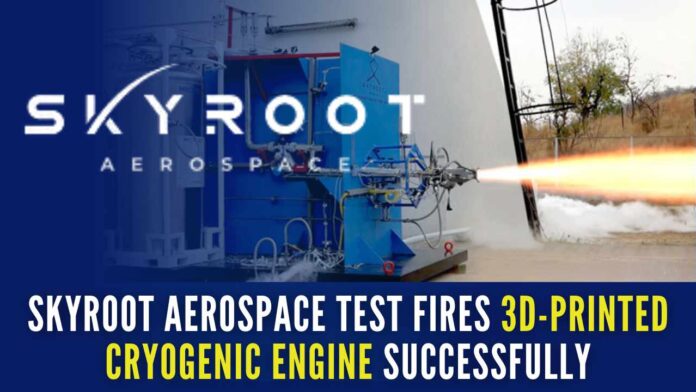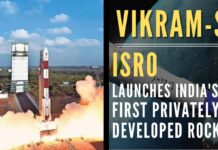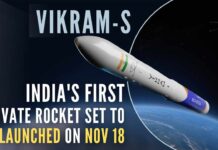
In another first, India’s Skyroot successfully tests 3D printed cryogenic engine
On Tuesday, private rocket maker Skyroot Aerospace said it had successfully test-fired its 3D-printed cryogenic engine called Dhawan-II for 200 seconds.
The endurance test of ‘Dhawan-II’ was carried out using Skyroot’s indigenously developed mobile cryogenic engine test pad at Solar Industries propulsion test facility in Nagpur, Maharashtra. And it lasted for a long duration of almost 200 seconds, which is a record. This achievement follows the November 2022 launch of Vikram – S, which made Skyroot the first Indian private company to send a rocket into space.
“The successful test of Dhawan-II is a landmark achievement for Skyroot and the Indian private space sector. We are proud to be at the forefront in developing cutting edge cryogenic technologies in the private space sector of India, and pushing the limit with advanced technologies like 3D printing and green propellants,” Pawan Kumar Chandana, Co-founder, and CEO of Skyroot Aerospace said.
The Dhawan-II engine builds upon the foundation laid by Skyroot’s first privately developed fully-cryogenic rocket engine, the 1.0 kN (kilo Newton) thrust Dhawan a” I, which was successfully test-fired in November 2021.
The cryogenic engine series is named in honour of Dr. Satish Dhawan, an eminent Indian rocket scientist who was crucial in developing the Indian Space Programme.
Naga Bharath Daka, co-founder and COO of Skyroot Aerospace, added: “This is a major milestone for our cryogenic propulsion programme, which will enhance the payload capacity of the Vikram series of space launch vehicles (rockets), making them more modular to meet wider customer requirements.”
According to Padmashri awardee V Gnanagandhi, a veteran rocket scientist who leads liquid and cryogenic propulsion at Skyroot Aerospace, it is encouraging to achieve continuous firing of 200 seconds with stable combustion.
“Our 3D printed Dhawan – II engine also uses a 3D printed torch igniter and a bellow actuated cryo-injection valve with quick response time. It is a remarkable achievement by our team and we could get valuable data for next-generation cryogenic engine technology with LNG as fuel,” Gnanagandhi said.
Today’s successful test takes the company a step closer to working on Vikram-II which is an upgraded version of Vikram-I which uses a cryogenic upper stage, ready to launch by next year.
The engine development was partly supported by NITI Ayog’s ANIC-ARISE programme. This programme, according to the company, helps to promote technologies including the use of green rocket propellants.
[With Inputs from IANS]
PGurus is now on Telegram. Click here to join our channel and stay updated with all the latest news and views
For all the latest updates, download PGurus App.
- Karnataka HM apologizes to Neha’s parents while the killer Fayaz’s mother expresses her desire to ‘punish her son’ - April 20, 2024
- US: Indian student’s death possibly linked to Blue Whale suicide game - April 20, 2024
- BSF seizes China-made drone near India-Pakistan border in Amritsar - April 20, 2024











India innovating. Happy to feel satisfied & some pride